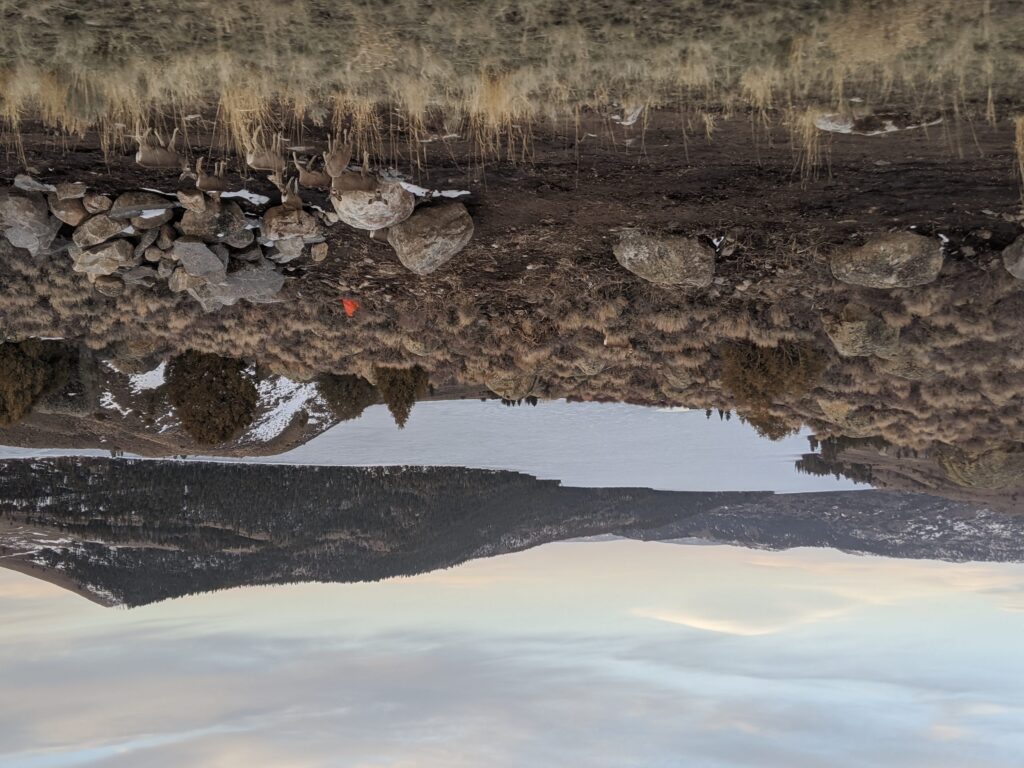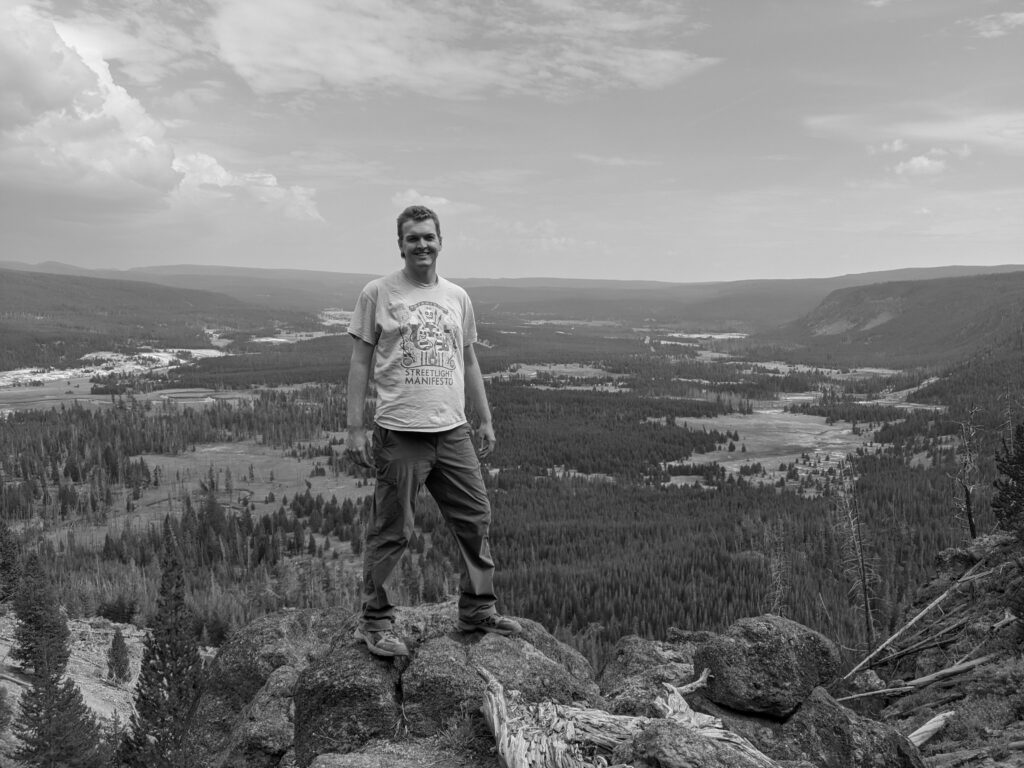What is spring? This may seem like an obvious question, but over the last few months I have come to appreciate that it is not as easy to answer as I once thought. The definition of springtime may change depending on where you are, who you are, and what you deem to be important in your definition. As someone who grew up in New England, I have always considered ‘spring’ to be primarily April and May, where sweatshirts are slowly replaced by t-shirts and pollen creates a constant runny nose. This definition of the timing of spring continued when my interest in birds grew about five years ago. I started to notice the colorful warblers indicative of springtime more in the month of April and by May, migration was in full effect with beautiful birds at every turn and biodiversity at a peak. Birding routes that would result in a list of 15 birds during winter would now enable me to see over 50 species. I came out to Pinedale, Wyoming at the end of March this year and was ready for the New England winter that I was accustomed to to be over. I was amazed at how far removed my definition of spring was in this area.
The sun rises on Fremont Lake in Wyoming, still entirely frozen on March 30th
As I arrived in town, I could already tell I was in a different season than what my body clock was ready for. Bird diversity was quite low (I may have seen 7 species on most outings) and winter residents were still present. The lake my lab mates and I cliff jumped into one afternoon last July was fully frozen over, much better suited for ice skating than swimming. More evident than anything was the lack of spring weather in the traditional sense. Most days I was in the field at the start of the season I was caught in at least one snowstorm, and I was frequently waking up to temperatures below 10 degrees Fahrenheit. While friends and family on the East Coast were starting to break out the shorts and sunglasses, I was more bundled up than I typically am in the tough New England winters. As I counted down the days to when it would finally be pleasant to work outside, I began to realize that signs of Spring were in fact present, as long as I knew where to look.
By some metrics, spring had already started by my March 29th arrival in Pinedale. It had been a low snowpack winter, so some grasses in the surrounding sagebrush steppe had already started turning green, several weeks earlier than is typical of the area. Greater Sage-Grouse were already well into their breeding season, with the male’s incredible strut on full display. Ski resorts in town and in Jackson had their end-of-season celebrations, and signs in the local gym were cautioning people to be mindful of their shoes during mud season, the time of year where frozen moisture in the ground begins to thaw and creates miles of muddy ground. Then, by mid-April, mule deer became a more common sight around town, as they were at the peak of their migration from their southern winter grounds to their summer range further North.
Sandhill Cranes approaching their roosting site on the Platte River as the sun sets in Kearney, NE on March 27th
Many different species undergo biannual migrations in an effort to track resources or raise young in a more favorable environment. These migrations can often be used as an indicator of a season change, as some of the primary cues of migration include length of day and weather conditions, factors closely related to seasonality (Bauer et al., 2011). Stunning mass movements of wildlife take place around the world, and thanks to the fluid definition of Spring between New Haven, CT and Pinedale, WY, I managed to see one of the most incredible migrations. In mid-March, Kearney, NE transforms from a quiet town into a bustling stopover site for Sandhill Cranes on their annual journey from wintering sites in the southern US to breeding locations as far north as Alaska. The air is filled with the calls of thousands of cranes, the largest congregation of cranes in the world, all attracted to the area due to the ample corn supply in fields surrounding the Platte River. Food access along migration routes is particularly important for some long-distance migrants, so it is important for these species to time their migration to when food is readily available.
An excellent example of this resource-related migration timing are the mule deer that I saw during my first month in Pinedale. These deer are known to closely track the “wave of green” that progresses through their migration route, between their winter range in the sagebrush steppe near Rock Springs up to their summer range in the mountains south of Jackson, Wyoming (Aikens et al., 2017). The available forage along this route is so important that the deer can take several weeks during the spring leg to cover the same distance that they can cover in a matter of days in the fall. Due to the reliance on green vegetation for this migration, the presence of these deer is a fantastic indicator that spring has started in the region. It would be particularly unexpected to observe this migration at the same time of year that I saw the migration of Sandhill Cranes, since the cues of forage availability are so drastically different depending on location and species.

A herd of mule deer on their migration from wintering sites in the south to summer sites in the mountains to the north.
However, as the climate around the world continues to change, migration timing and the definition of spring in local areas is likely to be altered. Since the migration of herbivores such as mule deer is tied so closely to when green vegetation is available, the timing of spring green-up could have major consequences for many species. In fact, in only the last 40 – 50 years, we have seen a tremendous shift in early-season phenology of a wide array of flowering plants, both at local scales and around the world (Bloom et al., 2022; Vitasse et al., 2022). In turn, weather conditions have also had profound impacts on migrants beyond food availability. For example, American Robins will alter their migration timing in relation to snow conditions along their route (Oliver et al., 2020). With snow conditions particularly susceptible to a warming climate, these phenology shifts are likely to continue. As I briefly mentioned earlier, I saw some of this effect this year, where grass was getting green at my field sites weeks before it typically would due to a winter with less snowpack than in previous years. Overall, the answer to the question ‘What is spring?’ is certainly not static across various locations, but climate change is creating a reality where the definition is fluid even at the local scale. It is increasingly important to study how climate change will continue to impact the timing of events as the world awakes from winter, as these shifts can have wide-reaching effects throughout ecosystems.
Works Cited
Aikens, E. O., Kauffman, M. J., Merkle, J. A., Dwinnell, S. P. H., Fralick, G. L., & Monteith, K. L. (2017). The greenscape shapes surfing of resource waves in a large migratory herbivore. Ecology Letters, 20(6), 741–750. https://doi.org/10.1111/ele.12772
Bauer, S., Nolet, B. A., Giske, J., Chapman, J. W., Åkesson, S., Hedenström, A., & Fryxell, J. M. (2011). Cues and decision rules in animal migration. In E. J. Milner-Gulland, J. M. Fryxell, & A. R. E. Sinclair (Eds.), Animal Migration (pp. 68–87). Oxford University Press. https://doi.org/10.1093/acprof:oso/9780199568994.003.0006
Bloom, T. D. S., O’Leary, D. S., & Riginos, C. (2022). Flowering time advances since the 1970s in a sagebrush steppe community: Implications for management and restoration. Ecological Applications, n/a(n/a), e2583. https://doi.org/10.1002/eap.2583
Oliver, R. Y., Mahoney, P. J., Gurarie, E., Krikun, N., Weeks, B. C., Hebblewhite, M., Liston, G., & Boelman, N. (2020). Behavioral responses to spring snow conditions contribute to long-term shift in migration phenology in American robins. Environmental Research Letters, 15(4), 045003. https://doi.org/10.1088/1748-9326/ab71a0
Vitasse, Y., Baumgarten, F., Zohner, C. M., Rutishauser, T., Pietragalla, B., Gehrig, R., Dai, J., Wang, H., Aono, Y., & Sparks, T. H. (2022). The great acceleration of plant phenological shifts. Nature Climate Change, 12(4), 300–302. https://doi.org/10.1038/s41558-022-01283-y

Rob Anderson, Western Resource Fellow | Rob Anderson, Western Resource Fellow | Rob is a Master of Environmental Science candidate at the Yale School of the Environment. His thesis research combines simulation modeling and field research to assess the potential of climate change to alter the plant community phenology of Southwest Wyoming through shifts in functional type. He is interested in incorporating species interactions and climatic changes to conservation decision-making. Prior to coming to YSE, Rob contributed to the protection of shorebirds with Mass Audubon, and then came to the EEB department at Yale to work on a global biodiversity mapping project. He received his B.S. in Environmental Science from Northeastern University. See what Rob has been up to. | Blog
